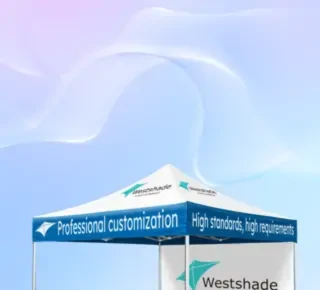
Are you looking for a convenient and easy-to-use solution for your outdoor activities? An inflatable tent is the perfect choice for you! In this comprehensive guide, we’ll explore everything you need to know about inflatable tents, from the installation process to maintenance tips. Whether you’re an experienced event organizer or new to the exhibition world, this guide will provide you with all the information you need to make the most of your inflatable tent experience.
What are inflatable tents and how do they work

Inflatable tents are a type of outdoor tent that uses air instead of traditional tent poles to provide structure and support. Inflatable air tents are made from durable materials to withstand outdoor conditions and can be inflated using a pump or air compressor. The installation process is straightforward – simply inflate the tent using the designated valve and the tent will quickly take shape. Once inflated, the tent remains strong and secure, providing you with a comfortable and spacious space. When it’s time to pack up, simply deflate the tent and fold it up for easy storage and transportation. Inflatable tents are a popular choice among outdoor event planners for their convenience, quick setup and durability.
Benefits of using inflatable tents

There are several benefits to using an inflatable tent for outdoor activities. First, inflatable air tents are very easy to set up. With a traditional tent, you usually have to spend time assembling and inserting the poles, which is both time-consuming and frustrating. Inflatable tents, on the other hand, eliminate all of this hassle by allowing you to simply inflate the tent with a pump or air compressor. This means you can have your tent up and ready to go in minutes.
Secondly, inflatable canopy tents are very durable. Inflatable tents are made of strong and durable materials that can withstand all kinds of weather conditions, including wind and rain. This makes them a reliable option for camping in different environments.
In addition, inflatable tents offer a spacious and comfortable camping space. The inflatable structure provides plenty of headroom for freedom of movement inside the tent. You can easily stand, walk around, and even set up tables, chairs, and displays without feeling cramped.
Finally, inflatable tents are easy to transport and store. When deflated, an inflatable canopy tent can be folded down to a compact size, making it easy to pack into a car or backpack. Inflatable tents are also lighter than traditional tents, which is beneficial if you plan to travel light for an outdoor fair.
All in all, the range of benefits of inflatable air tents makes them a popular choice for tradeshows. Whether you’re looking to improve your outdoor comfort or gain more attention, investing in an inflatable tent will enhance your outdoor experience and make your business activities run more smoothly.
Different types of inflatable tents available

There are several different types of inflatable tents on the market, each with their own unique features and benefits. One of the most popular is the inflatable dome tent, which is known for its simple and compact design. inflatable dome tents are easy to set up and have a stable and sturdy structure. Dome tents come in a variety of styles and configurations of support poles, depending largely on the size or style.

Another type of inflatable canopy tent is the inflatable tunnel tent, which offers more living space and through various combinations with sidewalls it is also possible to divide multiple spaces within it. Inflatable tunnel tents are ideal for large or small events that require more space.

An intermediate inflatable center pole tent is another option that combines the features of an inflatable tube and shelter, with a taller structure that makes it more visible at trade shows while also providing a roof that shields it from the harmful elements outside. Only, its taller structure makes it not as stable as other tents and requires the venue to have enough conditions to keep it stable on the ground.
For those looking for a more specialized camping experience, there are also custom inflatable tents designed for specific activities such as backpacking or mountaineering. These tents are usually lightweight and small, making them easy to carry and pitch in remote or challenging environments.
By learning about the different types of inflatable air tents, you can choose the one that best suits your needs and preferences. Whether you’re planning an outdoor fair or a weekend getaway, inflatable tents offer a comfortable and convenient shelter option.
Considerations before Buying an Inflatable Tent

- Size and Capacity: Determine the number of people the tent needs to accommodate and choose a size accordingly.
- Tent Layout: Consider the layout and configuration that best suits your needs, whether it’s a welcome area, merchandise display space, or walk-through space.
- Weather Resistance: Look for tents with durable materials and good waterproof ratings to ensure protection from rain and other elements.
- Setup and Pack Down: Assess the ease of setup and pack-down processes to ensure it aligns with your preferences and event schedule.
- Quality and Brand: Research reputable brands that offer high-quality inflatable tents known for their durability and performance.
Tips for setting up and taking down inflatable tents

Setting up and taking down inflatable tents can be a breeze with the right tips and techniques. Here are some helpful tips to ensure a smooth and efficient setup and takedown process:
- Familiarize yourself with the tent: Before heading out on your event trip, take some time to familiarize yourself with the inflatable air tent. Read the instructions and practice setting it up and taking it down in your backyard or a spacious area.
- Choose a suitable venue: When selecting a venue, look for a flat and level area free from rocks, branches, or any sharp objects that could potentially damage the tent. Clear the area of any debris before setting up the tent.
- Lay out the tent: Lay out the tent on the ground and ensure that all the parts and components are present. Check for any damages or defects before proceeding with the setup.
- Inflate the tent: Some custom inflatable tents come with an inflator pump or inflation system, if not you will need to have it ready in advance. Follow the manufacturer’s instructions to inflate the tent, making sure to inflate each chamber evenly. Take your time and avoid overinflating, as this can put unnecessary strain on the tent’s seams.
- Secure the tent: Once the tent is fully inflated, secure it to the ground using stakes or guy lines. This will help stabilize the tent and prevent it from being blown away by strong winds.
- Check for stability: Give the tent a gentle shake to ensure that it is stable and properly secured. Adjust the stakes and guy lines if necessary to achieve optimal stability.
- Take down the tent: When it’s time to pack up and leave, start by deflating the tent. Open all the valves and allow the air to escape. Gently press down on the tent to remove any remaining air.
- Fold and roll: Once deflated, carefully fold the tent according to the manufacturer’s instructions. Start from one end and roll it tightly, removing any excess air as you go. This will help minimize the size of the packed tent.
- Store properly: Store the deflated and rolled tent in a dry and clean storage bag or container. Avoid storing it in damp or humid conditions, as this can lead to mold or mildew growth.
- Practice makes perfect: The more you practice setting up and taking down your inflatable air tent, the easier and quicker the process will become. Take the time to familiarize yourself with the steps and techniques to ensure smooth running on the day of the event.
By following these tips, you can confidently set up and take down your inflatable tent, allowing you to spend more time enjoying the event with your customers.
Maintenance and care instructions for inflatable tents

Proper maintenance and care are essential for ensuring the longevity and performance of your inflatable canopy tent. Here are some important instructions to follow:
- Clean the tent: After each use, clean the tent thoroughly to remove any dirt, debris, or stains. Use a mild soap or detergent and a soft brush or sponge. Avoid using harsh chemicals or abrasive materials that could damage the fabric.
- Dry the tent: Before packing away the tent, make sure it is completely dry. Moisture can lead to mold or mildew growth, which can damage the tent. Hang the tent or lay it out in a well-ventilated area until it is fully dry.
- Check for damages: Regularly inspect the tent for any damages, such as punctures, tears, or leaks. Repair any small damages immediately using a patch kit or repair tape specifically designed for inflatable tents. For larger damages, contact the manufacturer for professional repair or replacement options.
- Store properly: When not in use, store the tent in a dry and clean storage bag or container. Avoid storing it in direct sunlight or extreme temperatures, as this can degrade the fabric and materials. Make sure the tent is completely dry before storing to prevent mold or mildew growth.
- Inflate and inspect: Periodically inflate the tent to check for any air leaks or structural issues. Pay attention to the seams, valves, and chambers. If you notice any problems, address them promptly to prevent further damage.
- Follow manufacturer’s instructions: Always refer to the manufacturer’s instructions for specific maintenance and care guidelines for your inflatable tent. Different tents may have different requirements, like custom inflatable tents, so it’s important to follow the recommended guidelines.
By following these maintenance and care instructions, you can ensure that your inflatable tent remains in good condition and provides you with many enjoyable outdoor experiences.






